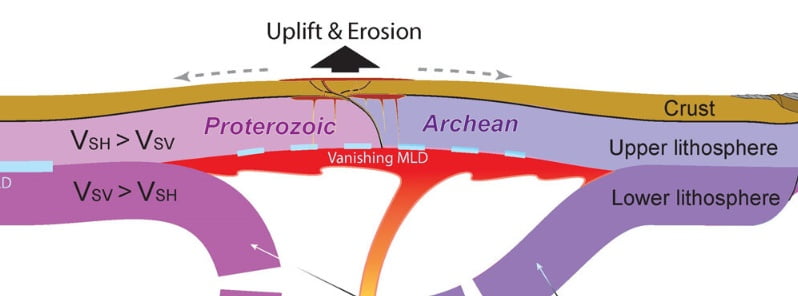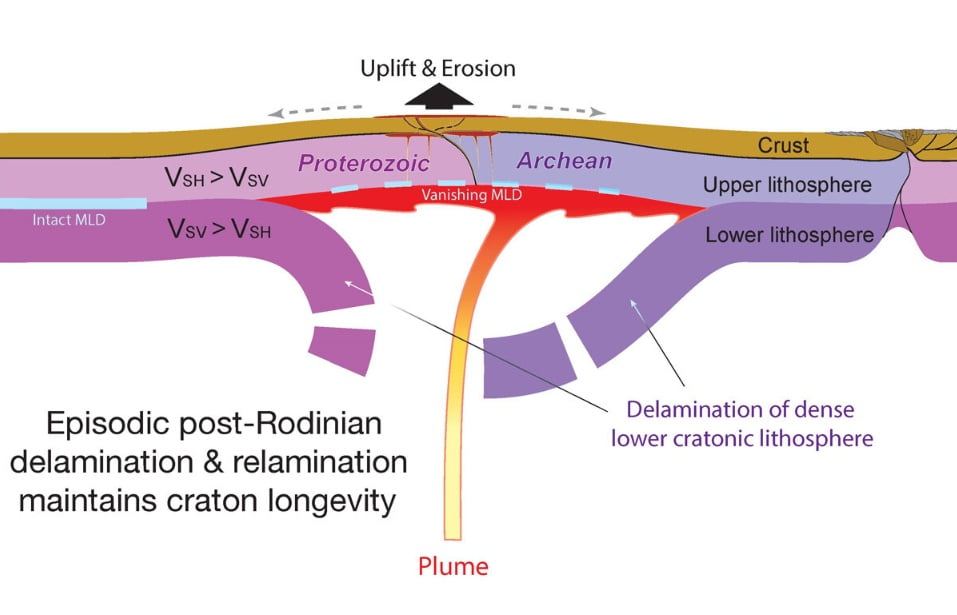Continental plates more unstable than previously thought

A revolutionary research study from the University of Illinois Urbana-Champaign disputes the decades-old conventional understanding of the Earth’s continental plates. The study posits that the Earth’s ‘stable cratons’—previously thought to be immovable regions of continental plates—have experienced repeated deformations beneath their crust since their formation.
The research, led by Illinois geology professor Lijun Liu, utilized previously gathered density data from the lithosphere—the Earth’s uppermost rigid layers of crust and mantle. Liu’s team examined the relationship between the surface topography of cratons and the thickness of the lithosphere layer underneath them. The findings were published in the journal Nature Geosciences.
Cratons are the longest-lived tectonic units on Earth due to the lack of deformation they have experienced since their formation. They have survived supercontinent cycles, including the formation and breakup of Pangea and Rodina. Liu explained that the prevailing belief has been that cratons’ longevity was due to their “thick underlying mantle roots, or keels, which are thought to be buoyant and strong and thus stable over time.”

However, recent studies from Liu’s team challenge this view, showing that these mantle keels are indeed quite dense. In a 2022 study, Liu’s team demonstrated that most of the Earth’s cratons would be about 3 km (1.8 miles) above the sea surface if their keels were buoyant, whereas their actual elevation is only a few hundred meters. This discrepancy suggests that the lithospheric mantle beneath the crust must be dense enough to pull the surface down by about 2 km (1.2 miles).
By using gravity field measurements, the researchers identified the density structure of the craton keels. They found that the high-density material likely resides in the lower portion of the mantle keel, indicating an increasing density profile with depth below the cratons.
The new study reveals that the lower portion of the mantle keel, being denser, tends to peel away from the lithosphere above during mantle upwellings or plumes, initiating supercontinent breakups. After warming up within the hot mantle, these ‘delaminated’ keels could return to the base of the lithosphere. Liu likens the process to the movement seen in a lava lamp.
Furthermore, the team found that mantle delamination could cause the craton surface to rise and lead to erosion. This has significant implications for the crustal thickness of cratons, an observation never made before this study.
Liu highlighted two significant uplift and erosion events in the past, coinciding with the separation of the supercontinents Rodinia and Pangea. These events resulted in the ‘Great Unconformity’, a gap in the Earth’s rock record where no new deposition occurred, only deep craton erosion. These episodes of erosion are why ancient lower crust is exposed at the craton’s surface today.
The study concludes that this episodic deformation style of the lower craton keels has allowed craton crusts to survive throughout long geological periods. “We believe this newly hypothesized lifestyle of cratons will significantly change people’s view on how continents evolve and how plate tectonics operate on Earth,” Liu said.
References:
1 Geologists challenge conventional view of Earth’s continental history, stability with new study – Illinois University – June 12, 2023
2 Secular craton evolution due to cyclic deformation of underlying dense mantle lithosphere – Lijun Liu et al. – Nature Geoscience – June 12, 2023 – DOI https://doi.org/10.1038/s41561-023-01203-5
Featured image credit: Lijun Liu

Commenting rules and guidelines
We value the thoughts and opinions of our readers and welcome healthy discussions on our website. In order to maintain a respectful and positive community, we ask that all commenters follow these rules.